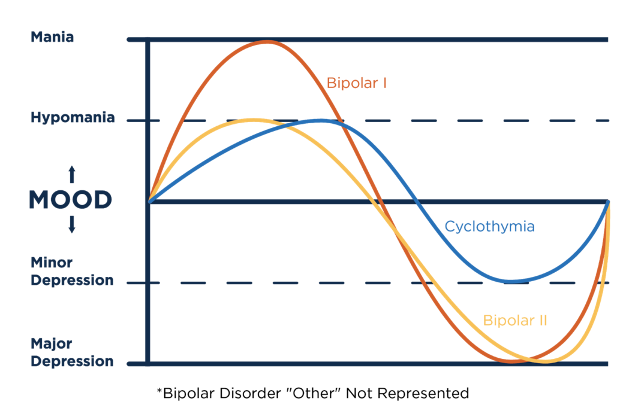Feb 27th - 2 Min Read
Bipolar Disorder: The Silent Killer
By: Ayat AbdulhameedBipolar disorder can affect relationships, education, work, and more. According to Our World in Data, 46 million worldwide are diagnosed with Bipolar disorder. This is aside from the many undiagnosed people because of lack of awareness, which makes them feel like their mixed behavior is their fault or their whole identity; meanwhile, it is a medical condition that can be controlled.
Bipolar Disorder is a mental illness causing unusual shifts in mood, ranging from extreme highs Mania to extreme lows Depression. Someone with Bipolar disorder may experience changes in their energy, thinking, behavior, and sleep. This makes it difficult for the individual to carry out daily tasks, work, attend school, and maintain a healthy relationship.
Depressive episodes include losing interest or pleasure in most activities and feeling sad and hopeless. In contrast, the Mania episode includes feeling euphoria and being full of energy, and being overly excited about something. Less severe manic periods are known as hypomanic episodes.
There are three types of bipolar disorder. Each involves clear changes in mood, energy, and activity level:
- Bipolar I disorder is a maniac episode that lasts seven days, and the person experiences severe manic symptoms sometimes. Usually, depressive episodes occur as well, typically lasting at least two weeks. In some cases, Mania may trigger a break from reality called (Psychosis).
- Bipolar II disorder is a pattern of depressive episodes and hypomanic episodes.
- Cyclothymic disorder is defined by very mild hypomanic and depressive episodes that are triggered by a particular drug, alcohol, or medical condition, such as Cushing’s disease or multiple sclerosis, or stroke.

Signs and symptoms of bipolar I and bipolar II disorders may include other features, such as anxious distress, melancholy, psychosis, or others. The timing of symptoms may include diagnostic labels such as mixed or rapid cycling. In addition, bipolar symptoms may occur during pregnancy or change with the seasons.
Symptoms of bipolar disorder can be challenging to identify in children and teens. It's often hard to tell whether these are normal ups and downs, the results of stress or trauma, or signs of a mental health problem other than bipolar disorder. The pattern can vary from that of adults with bipolar disorder. And moods can rapidly shift during episodes. Some children may have periods without mood symptoms between episodes. Bipolar disorder is a lifelong illness. Episodes of mania and depression typically come back over time. Between episodes, many people with bipolar disorder are free of mood changes, but some people may have lingering symptoms. Long-term, continuous treatment can help people manage these symptoms, including those with the most severe forms of bipolar disorder.
An effective treatment plan usually includes a combination of medication and psychotherapy, also called talk therapy. Remember that bipolar disorder is a medical condition and not your fault or your identity. It can be controlled through treatment, acceptance, and understanding of loved ones and empowering yourself to find balance in your life.
